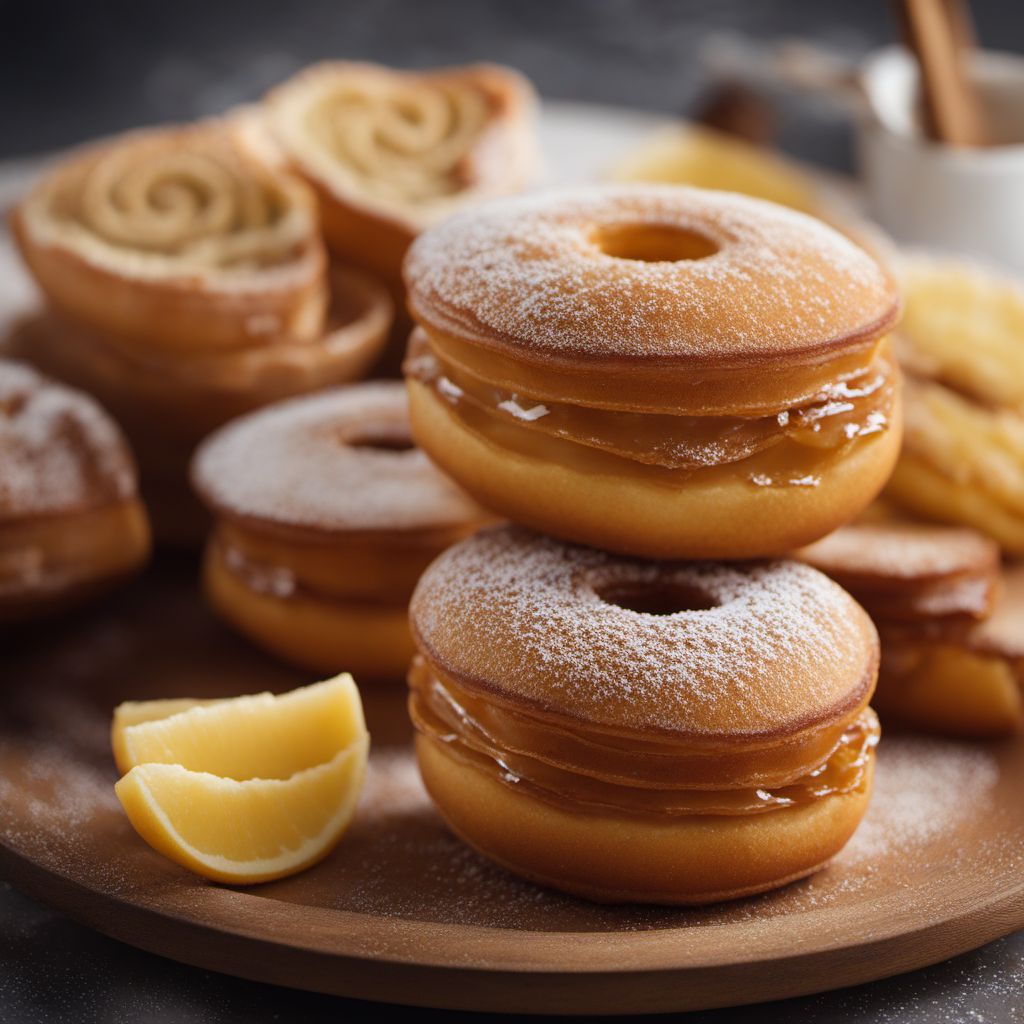
Ingredient
Baumkuchen and similar
Layers of Delight: The Art of Baumkuchen
Baumkuchen and similar cakes are made by meticulously layering batter on a rotating spit and baking it until each layer is golden brown. The result is a cake with a unique ring pattern resembling the growth rings of a tree. These cakes have a moist and tender crumb, often infused with flavors like vanilla, chocolate, or rum.
Origins and history
Baumkuchen, meaning "tree cake" in German, has its roots in medieval Europe, where it was a delicacy enjoyed by nobility. Over time, it spread to other parts of the world, including Japan, where it became a popular dessert known as "baumkuchen." Today, variations of this cake can be found in different cultures, each with its own twist on the traditional recipe.
Nutritional information
Baumkuchen and similar cakes are a treat that should be enjoyed in moderation due to their high calorie and fat content. However, they can bring joy and satisfaction when savored as an occasional indulgence.
How to select
When purchasing baumkuchen and similar cakes, look for ones that have a uniform golden-brown color and a moist appearance. Avoid cakes that appear dry or have uneven layers. Opt for freshly baked cakes whenever possible for the best flavor and texture experience.
Storage recommendations
To maintain the freshness and moisture of baumkuchen and similar cakes, store them in an airtight container at room temperature. Avoid exposing them to direct sunlight or high humidity, as this can cause the cake to become stale or lose its texture.
How to produce
Baumkuchen and similar cakes are best left to skilled bakers who have mastered the art of layering and rotating the batter to achieve the characteristic ring pattern. However, adventurous home bakers can attempt to recreate these cakes using specialized molds and following detailed recipes and techniques available online.
Preparation tips
Baumkuchen and similar cakes can be enjoyed as a standalone dessert, paired with a cup of tea or coffee, or used as a base for elaborate cake decorations. They can also be sliced and served with fruit compotes or whipped cream for an elegant dessert presentation.
Culinary uses
Baumkuchen and similar cakes are commonly found in Germany, Japan, and other European countries. They are often associated with special occasions, celebrations, or as a luxurious treat for dessert enthusiasts.
